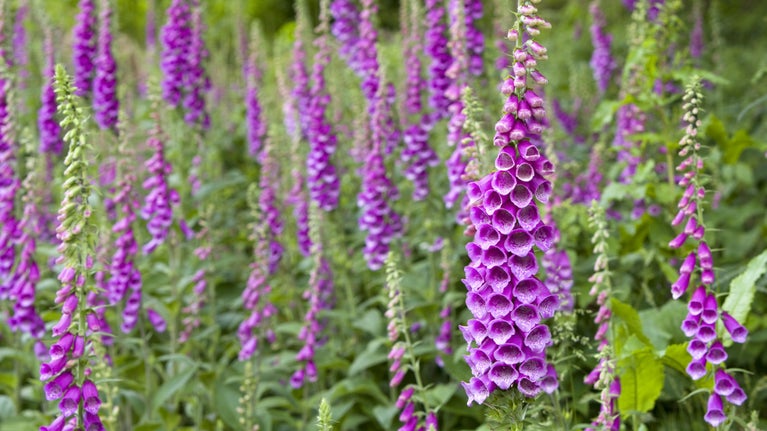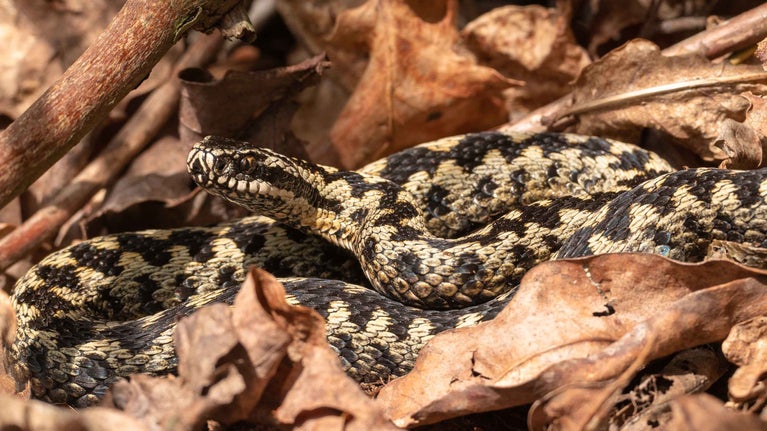Summer sights and sounds at West Runton and Beeston Regis Heath

Discover the delights of the season and what flora and fauna you might spot on your summertime visit.
Flowers
Decorating shady spots, white and purple foxgloves produce tall flowering spikes from their second year and can be found in the woodlands and on the heath from early summer to autumn.
Keep an eye out for red campion with its bright pink-red flower, downy leaves and stem. Found under hedges and in the woodlands, they usually come into flower as the bluebells start to fade.
At the top of Incleborough Hill, you’ll find the strange parasitic plant, dodder, growing entwined round the gorse. Inhale its heavy scent in mid-summer.
Especially noticeable are the ferns, especially the scaly male variety whose croziers unfurl to reveal stunning golden-brown scales, which help them stand out among the broad buckler ferns.
As evening approaches the scent of the honeysuckle intensifies, while bats take to the wing and nightjars can be heard churring.
Towards the end of summer, heather on the heathland bursts into flower. It is easier to see the vibrant pinks and purples while the foliage is not so impenetrable.

Birds
Listen out for migratory birds including willow warblers, with their sweet, descending scale.
As days grow longer birdsong gets louder with the dawn chorus especially evident in the beech wood by the main drive beyond the caravan site.
Listen out for the two common woodpeckers. The green woodpecker is distinguishable by its laughing call and can be seen feeding on the heathland, gobbling up ants.
The great spotted woodpecker’s ‘song’ is in fact a drumming sound made by hitting tree branches with its bill. This is a combined warning to competitors and a mating call.
The great spotted woodpecker is around the same size as a blackbird, compared to the lesser spotted, which is sparrow sized.

Repties and amhibians
This area is well known for its reptiles, the adder, or viper as it is sometimes called, being the most common. It is the only venomous reptile in the UK and is generally shy and non-aggressive.
A small and stocky snake, adders can vary in colour, with males usually grey and females a reddish brown. Both sexes have a distinctive diamond shaped or zigzag pattern along their backs.
Adders can be seen basking in the sun on the heath to regulate their body temperature, as well as slow worms and common lizards.
Adders are secretive animals and prefer to slither off into the undergrowth rather than confront and bite humans and domestic animals; most attacks happen when they are trodden on or picked up. Instead, they use their venom to immobilise and kill their prey of small mammals, nestlings and lizards.

Adder warning
Dogs may be seriously affected by adder venom. If your dog is bitten you should seek veterinary attention IMMEDIATELY
Never attempt to pick up an adder and please keep dogs close on a short lead.
Adders’ venom is generally of little danger to humans: an adder bite can be painful and cause inflammation but is mostly of concern to the very young, ill or old.
If you or your dog are bitten, medical or veterinary attention should be sought immediately.
Animals
Catch a glimpse of muntjac, roe and red deer as they break cover and sprint across the paths.

Insect life
In summer, the trees are buzzing with life with insects, including butterflies, on the wing.
Look out for brimstone, comma, gatekeeper, orange tip, fritillaries, common blue, peacock and purple hairstreak around the oak tree canopy. If you’re lucky, speckled wood and white admiral can be admired.
